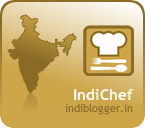The trip was a furry of rekindling my food affair with local favourites amidst a chaotic schedule that involved three weddings (One in Delhi and Pune, one in Bangalore and Chennai and one from start to finish in Bangalore), as well as introducing my boyfriend to them for the very first time. And you know what they say, first impressions are everything, so I was eager to take him to the best-of-the-best, institutions that have stood the test of time.

Breakfast is easily the most important meal of the day, especially when you are travelling and have a whole day of discoveries ahead of you to be made.
Konark on Residency Road is the best place in town to score South Indian delights ranging from the humble plain dosa (thin, flat pancake made from fermented rice flour) with coconut chutney and sambar to masala dosa (stuffed with cumin-spiced potatoes), idlis (steamed rice flour like sponge-cakes), vadhas (deep-fried doughnuts made from lentil flour) to puri-palya (deep-fried bread, inflated to look like UFOs, served with spiced potatoes) and channa-bhatura (larger UFOs served with chick-pea curry).
Although 100% vegetarian - this place has my stamp of approval, and you know this means a lot. In years past, Airlines that sits on Lavelle Road and St. Mark's Road cross junction, used to be my preferred spot for a hit of South Indian loving, but the last two visits to Bangalore have made me realise like my family that the standard has really dropped and their is really no point in returning to the old hangout.
Konark impresses not only with the food, but their range of freshly-squeezed fruit juices are phenomenal with flavours to choose from like Sweet Lime, Grape, Watermelon, Orange, Apple to Lime.

In the picture above is a plate of Papdi Chaat, one of many kinds of Indian street fast-foods that are referred to as Chaat principally containing crispy deep-fried papad that comes in a variety of shapes, sizes and brittle textures, a variety of spiced powder including chilli and chaat powder, yoghurt to soothe, and garnished with fresh coriander. One of my favourite haunts is Neetu's on Commercial Street.

There is one and only one place to eat the perfect Gulab Jamun and that is at Bhagat Rams Sweet Shop on Commercial Street. The shop has been around for decades, the only thing that remains changed is the location a couple of blocks down in what used to be called the 'Tunnel of Love'.
Possibly the city's most busy confectioner, they produce a range of North Indian and South Indian sweets at a standard that is far superior to that of any of their competitors.

Bhutta is the local term for char-grilled corn on the cob that is cooked on burning embers from coal fires fanned by vendors on wheelable carts. The smoke emitting from the burning coals gives the corn a characteristic smoky flavour and aids in gently blistering the tight skins covering the individual pearls of corn, yielding a sweet taste as you bite in. After the corn is char-grilled it is wiped with a brush that is dipped in a mixture of lime, salt and chilli. The result is a tangy, cheek sucking oooh-ahh flavour that is absolutely unique and oh-so addictive.
 What kind of trip to India could possibly be complete without sampling a variety of kebabs ? Kebabs serve as the appetiser portion of the Indian meal and are a North Indian concept. Kebabs usually refer to morsels of meat off or on the bone that have been marinaded or spiced, cooked and then served with lime and a dipping sauce of some kind. Quite often kebabs are skewered, boneless pieces of chicken, meat or fish that are cooked in a tandoor, a North Indian method of cooking that is attributed to the Afghans, the tradition having travelled down with Alexander.
What kind of trip to India could possibly be complete without sampling a variety of kebabs ? Kebabs serve as the appetiser portion of the Indian meal and are a North Indian concept. Kebabs usually refer to morsels of meat off or on the bone that have been marinaded or spiced, cooked and then served with lime and a dipping sauce of some kind. Quite often kebabs are skewered, boneless pieces of chicken, meat or fish that are cooked in a tandoor, a North Indian method of cooking that is attributed to the Afghans, the tradition having travelled down with Alexander.
Rosagulla - probably the most famed food the Bengali community has to offer the world. This sweet was invented by K.C. Das and is till date run by the same family, obviously having been passed down in generations with stores having opened in cities across India. Bangalore was graced with a store in the '80's die to a limit on the usage of milk.
The sweet is made from paneer (Indian version of cottage cheese) that is fried and then placed in a sugar syrup, so as to absorb the sweet juice.

Keerkidham (above) is yet another Bengali sweet, not as famous as the Rosagulla, but tastier in my opinion. The centre is a cotton-candy pink and the texture much softer and supple than that of the chewy Rosagulla, not to mention it is not as sickeningly sweet.

The thali is very much a creation of South India and is characterised by several small bowls containing various sambar, rasaams (curries/ gravies), cooked vegetable, cooked meat and usually accompanied with a range of starches in a certain order. Rice most definitely features at the start usually progressing to chapati or roti and then curd-rice to finish. Sometimes Biryani maybe included if it is a lavish thali.
Below is another picture of a thali (my best friend enjoying her meal), but served straight onto a banana leaf in the traditional style, minus the bowls. Both are typically South Indian styles of eating, the one above simply a more modernised approach to eating.







